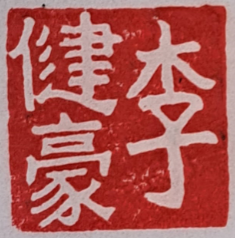The first time I really sit down to think about Chinatown, it is the year 2020. A major university press’s new series of ‘decolonial tour guides’ has commissioned an issue on Singapore, and what better to write about a place when the borders of my universe now rest strictly within a city-state less wide than the A train line runs? I fail to complete this chapter for reasons related to the pandemic, so I want to revisit my ill-developed thoughts here.
Despite being neighbourhoods within cosmopolitan, Anglophone ‘global cities’ today, Singapore’s Chinatown began as a zone of “colonial containment”, denigrated for its crowded tenements and ‘inefficient’ land use.1 The modern Singaporean state has transformed it into a ‘Cultural Precinct’ for heritage, touristic and ultimately economic ends. I am not sure what tourists expect to find in a Chinatown in a city-state known for a majority ethnic Chinese population – some sort of atavistic return to an ancestral past? Jumbled associations with Chinatowns of other similar cities, that host diasporic celebrations on designated national/feast days? Vestiges of organized crime? Unusually cheap “ethnic” food? (This one is true, insofar as newer generations of Chinese immigrants from inland and northern regions have arrived with their coal-grilled skewers and spicy hotpot tables and potato salads, discovered by Singaporean food bloggers only years after they began to cater to fellow migrants).
There is the usual architecture I imagine would have been vastly out of place in the impoverished coastal cities of southern China or Malayan villages that most of Singapore’s Chinese-descended population hail from today. The relic nestled in the totemic ‘Buddha Tooth Relic’ temple is of dubious provenance, acquired from a company affiliated with the military junta in neighbouring Myanmar. But the basement sports a clean, air-conditioned food court with distinctly Singaporean dishes made vegetarian, the service staff a mix of newer migrants from mainland China and a dwindling population of lay temple staff with their Singaporean accents. My Buddhist friend brings me here for the first time, scoffing at the artifice of the temple’s centerpiece but devoting himself to a brief prayer anyway. Singapore’s religious demographics are rapidly re-aligning towards either secularism of an Anglosphere-inflected Christianity, so strange bedfellows can be made out of the few structured religious spaces Buddhists might have in the city’s downtown core.
I come across a snippet of a word document:
“Chinatown is thus one vision of Global City Singapore depopulated , echoing Singapore’s framing as a colonial port, a commercial ‘Liverpool of the East’ interchangeable amongst the British Empire’s other crown jewels. A global imaginary of colonial networks now swapped for neoliberal one.”
I was going to cite a film called ‘Building a New Singapore’, produced by Cathay films, and then draw a comparison to how hygiene was invoked to justify forms of urban renewal that made Chinatown possible implicitly justified by ideas of dereliction, overcrowding, disease. These repercussions not initially touristic (rather, residential and commercial), but contribute to the overall mystique of Singapore as a clean (if aculture, boring) city. I now see these as almost akin to a foil to New York City itself, and of course, its Chinatown.
- Seng, Eunice. “People’s Park Complex: The State, the Developer, the Architect, and the Conditioned Public, c.1967 to the Present.” Southeast Asia’s Modern Architecture: Questions of Translation, Epistemology and Power, 2019, p.238.
↩︎

Leave a Reply